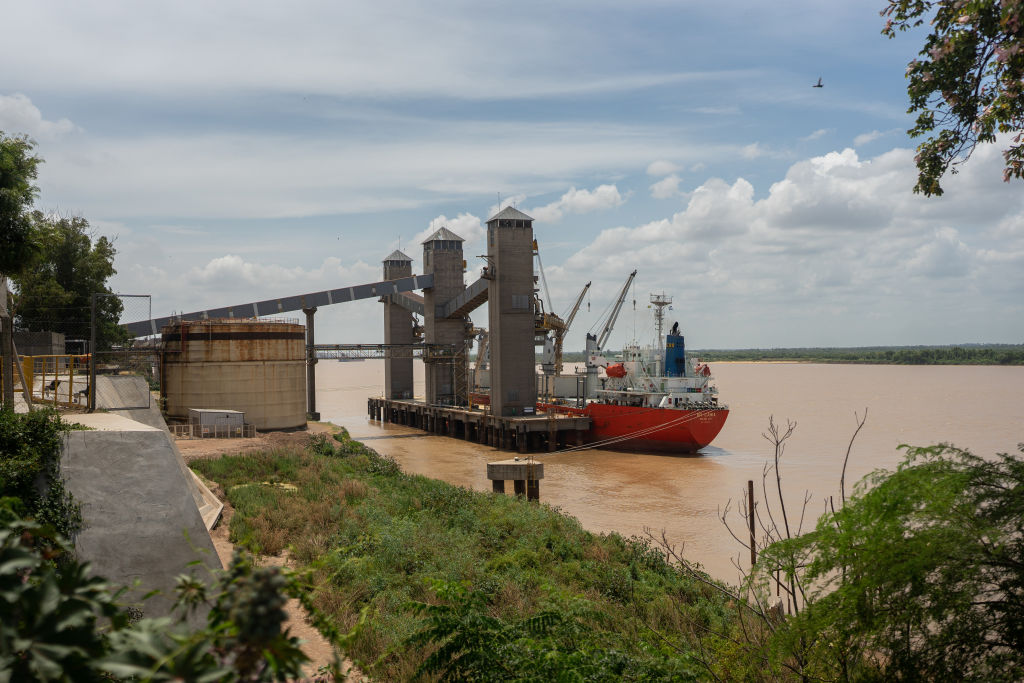Transportation and Communication Infrastructure in Latin America: Lessons from Asia
Transportation and Communication Infrastructure in Latin America: Lessons from Asia
By
Rachel Spence
Panelists explored the importance of infrastructure to economic development and trade, how to promote greater investment in the sector, and the barriers to developing infrastructure in Latin America.
Speakers:
- Ellen Frost, Visiting Fellow, Peterson Institute for International Economics
- Barbara Kotschwar, Research Associate, Peterson Institute for International Economics
- Mauricio Mesquita Moreira, Principal Economist, Integration & Trade Sector, Inter-American Development Bank
- Alessandro Pio, Resident Director General, North American Representative Office, Asian Development Bank
- Christopher Sabatini, Editor-in-Chief, Americas Quarterly; Senior Director of Policy, Americas Society and Council of the Americas (moderator)
Summary
Americas Society and the Peterson Institute for International Economics (PIIE) hosted a conversation on transportation and communication infrastructure in Latin America. The basis for this discussion was PIIE’s original research, published in the report Transportation and Communication Infrastructure in Latin America: Lessons from Asia, and Americas Quarterly’s Winter 2012 article “Going Places?” This research compares Latin America and Asia regarding hard and soft infrastructure and regional trade arrangements. The research was conducted in collaboration with Americas Society and with support from the GE Foundation. The panelists explored the importance of infrastructure to economic development and trade, how to promote greater investment in the sector, and the barriers to developing infrastructure in Latin America. They also outlined current best practices, including lessons learned from Asia.
Hard and Soft Infrastructure in Latin America and Asia
Infrastructure is essential for commerce, economic growth, and development. Latin American countries have integrated their trade systems through regional and bilateral agreements, but have not yet reached their economic potential due to the lack of accompanying infrastructure. All too often, governments in the region focus on politics without concentrating on practical projects for increasing trade. Hard infrastructure developments, such as roads and ports, can improve competitiveness, reduce costs of imports and exports, and reduce inequality. These developments increase opportunities for the poor to participate in domestic and international markets and gain access to social services.
Because of its infrastructure deficit, Latin America has not been able to take advantage of its proximity to large markets. In many cases, the cost of transporting goods to the United States from Asia is lower than from Latin America. Though Latin America requires more regional and national hard infrastructure, the region has improved its soft infrastructure, such as regulations and paperwork. In comparison, Asian countries have made infrastructure a top priority, implementing many projects with assistance from the Asian Development Bank, which have improved national, regional, and cross-border infrastructure. These differences between Latin America and Asia explain approximately a quarter of their economic growth differential.
Infrastructure and Economic Growth Causality
The Americas Quarterly article “Going Places?” by Barbara Kotschwar, research associate at the Peterson Institute for International Economics, posited the question: “Which comes first: trade or transportation?” Infrastructure and growth have a “causality link,” according to Alessandro Pio, resident director general of the North American Representative Office at the Asian Development Bank. The panelists observed that transportation and communication improvements have led to increases in trade, while public and private investment have also resulted in demand for infrastructure development. With the prevalence of trade relationships and agreements in Latin America, the advancement of these systems caused a demand for infrastructure, which will lead to both improved trade and stability in a region with the possibility for conflict. Overall, integration and infrastructure initiatives will develop the economy and stability of the region.
Financial Support for Infrastructure Development
Similar to the role of the Asian Development Bank (ADB) in Asia, the involvement of regional banks in Latin America is important to enlarging the local market, such as funding cross-border infrastructure projects.
Pio specified that 80 percent of the ADB portfolio is focused on infrastructure initiatives, compared to between 30 to 40 percent at the Inter-American Development Bank. Despite this, the ADB’s financing of infrastructure projects is still not meeting the demand in Asia. Private sector involvement in this process in both regions is not only necessary to assist in meeting demand, but also logical. Private investment has supported the establishment of international production networks along with telecommunication and information expansion. In order to encourage investment in Latin America, improvements in the areas of transparency and corruption are needed. In this era of resource scarcity, Latin American countries should utilize this opportunity to encourage investment in improving access to natural resources and energy. Through financing public and private structural development in these sectors, the region will cut costs and gain a competitive edge due to their proximity to the large American markets.
Lessons Learned from Asia
Throughout the conversation, panelists proposed many lessons drawn from Asian development that may be applicable to Latin America. Lessons included:
- Private and public investment is easier and more successful in areas where production and trade patterns are already emerging;
- Increasing public investment and government involvement is essential for the comprehensive implementation of infrastructure projects;
- Commitment from outside sponsors, such as the Inter-American Development Bank, encourages private investment;
- In addition to facilitating trade, infrastructure helps combat crisis and increase resilience;
- Initially, hard infrastructure improvements along with less expansive projects are best because they are more tangible and practical; and
- Competitive cooperation between states will increase the importance of national and regional infrastructure improvements.
Applying the Asian Model to Latin America
In a constantly evolving world climate, the two regions have differing endowments of resources and political atmospheres that prevent Latin America from adopting Asia’s infrastructure model. The history of Latin America, in which countries have looked inward for decades, resulted in financial crisis. Consequently, Latin America as a region has lacked infrastructure development for close to 30 years. The countries have finally changed their strategy, resolving fiscal issues and opening up to trade, but face challenges to overcome three decades with little infrastructure investment. Too often, Latin America does not have the required political foundation, while the public sector lacks a strategic vision for economic regionalism. Furthermore, countries do not have the ability to implement measures similar to Asia. Latin America should not follow Asia’s path, but should determine the characteristics and demand in the region and adapt infrastructure accordingly.








